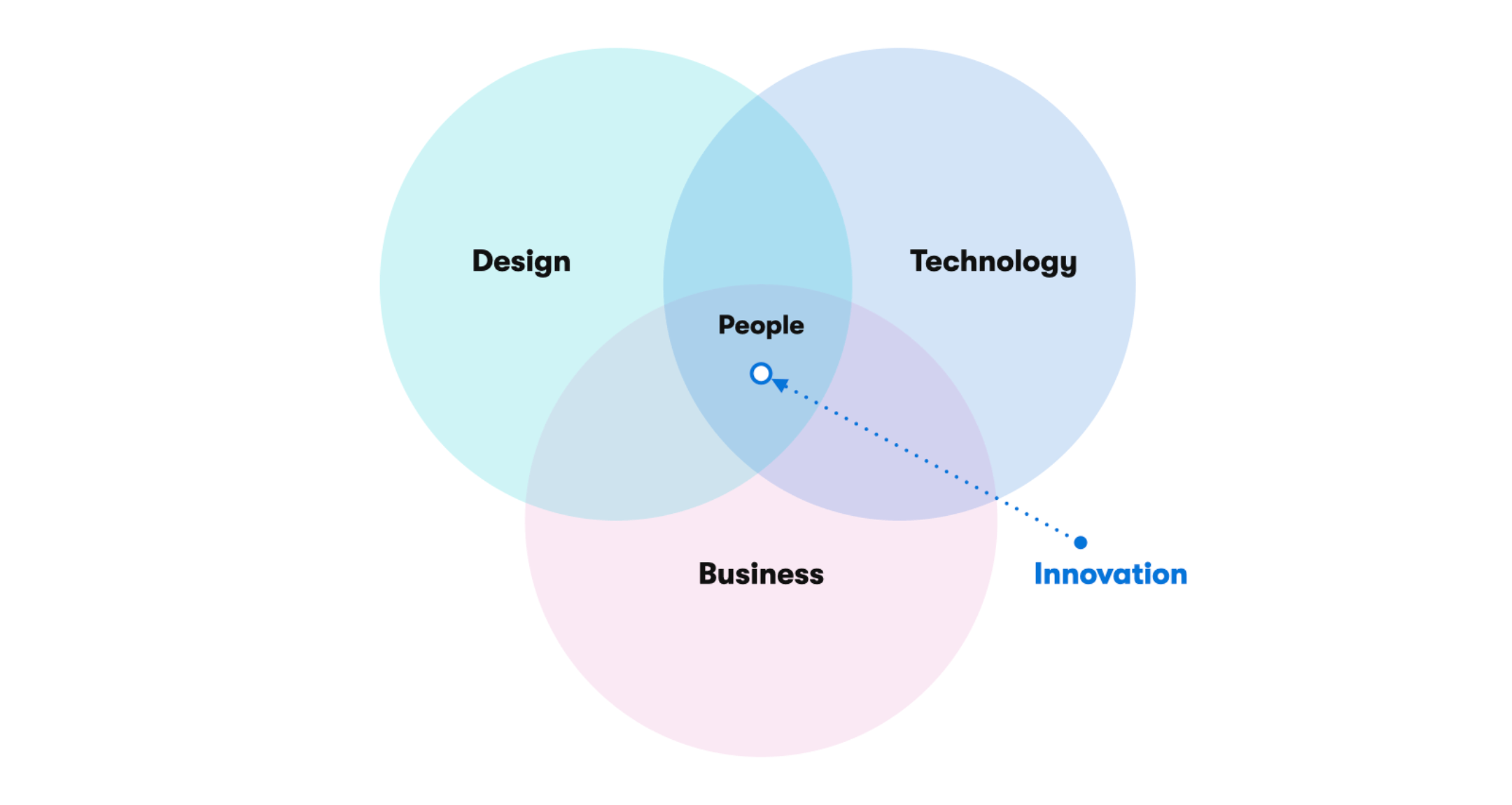Article
Designer's View on Innovation
How design can serve as a catalyst for innovation
Design is often assumed to be synonymous with innovation, but that's not necessarily the case. Moreover, a designer alone isn't solely responsible for driving innovation. True innovation emerges from interdisciplinary teamwork, where design serves as a powerful enabler. Let's explore how.

Introduction
In today's highly competitive landscape, innovation impacts every industry, from early-stage startups to established telecom operators. Simply put, every company must innovate to compete and differentiate from rivals. The most innovative companies elevate themselves by finding a competitive advantage that is difficult, if not impossible, for others to replicate. This is where the true market leaders emerge. On the other hand, some companies have achieved this status purely through building a strong brand. Take Coca-Cola, and their flagship product Coke, may not be the only or even the best cola drink, yet they maintain one of the highest brand recognitions and company valuations globally.
Let's first clarify the difference between innovation and invention. Innovation differs from invention in that it doesn't necessarily have to be something completely new – take the Dyson vacuum cleaner, for example. Vacuum cleaners had been on the market for years before Dyson introduced its innovation: the first bagless vacuum. This innovation was beneficial to customers because they no longer needed to buy separate vacuum bags. Additionally, it's eco-friendly and helps conserve nature. In other words, innovation doesn't have to involve a new invention; it's about usefulness, a new or more efficient approach, or tapping into a new market.
Mental Exercise
Let's take a look at one of Henry Ford's famous sayings:
“If I had asked people what they wanted, they would have said faster horses.”
Henry Ford played a key role in the industrial revolution by not only inventing the car but also pioneering the assembly line, both of which grew into entire industries. Let's reflect on Henry Ford's famous saying in the context of the modern approach to innovation:
- The need was defined by people – They wanted a faster way to move from point A to point B.
- The company introduced an innovation (the car), leading to the creation of an entire industry around it.
- The innovation was a collaborative effort involving business, technology and design.
In essence, this closely aligns with the modern design thinking framework, though it lacks the concept and validation phases. It's quite likely that Ford conducted market research or at least made empirical observations to reach this conclusion. With horses, they had likely hit a so-called "local maximum", where no faster horses could be found. Interestingly, the first cars weren't even faster than horses, but they offered other advantages over riding, such as increased comfort and convenience. The car represents a truly disruptive innovation, as it has impacted all of our lives and significantly transformed the world. An entire ecosystem – the automotive industry – emerged around the car, which then introduced another game-changing innovation: the assembly line.
By examining Henry Ford's quote alone, we can learn the following about innovation and the innovation process:
- Innovation doesn't originate from people (customers), but they define the need and, in doing so, create the market. Steve Jobs often remarked that participants in Apple's focus group interviews rarely offered particularly good ideas.
- It's the company that creates an innovation to meet that need. Innovation requires forward-thinking and always involves taking risks. Apple took a significant risk when it entered the mobile phone market with a completely different approach, directly challenging the then-market leader Nokia.
- Design is what enables innovation. While design isn't the same as innovation, it can fuel it through various processes, methods and exercises. Apple has created a distinct brand and design style that is instantly recognizable, even to those who don't own any of their devices.
I'm approaching this topic from a digital professional's perspective, where innovations are frequently technology-driven. It's worth mentioning, that in today's world, innovations tend to be technology-focused across nearly every industry. Design and technology are often presented as opposites – even as conflicting forces – when in fact, they work hand in hand.

Modern innovations are typically developed with a focus on customer-centricity, positioning people at the core of collaboration between business, design and technology. This intersection is where the sweet spot of innovation is found.
Final Conclusions
From all the points mentioned above, we can draw a few conclusions and identify some key characteristics typical of innovation:
- People determine the needs and shape the markets.
- Technology creates the opportunity, while design serves as the enabler and differentiator.
- Business defines the strategy and sets the ultimate vision.
Most importantly, true innovation is interdisciplinary teamwork that heavily involves risk-taking. Woody Allen captured the essence of innovation well:
“If you're not failing every now and again, it's a sign you're not doing anything very innovative.”
The earlier example of the car was a groundbreaking innovation, but innovation doesn't always need to be so radical. Even small, everyday innovations can be crucial in helping a digital service stand out in the market or boost sales. This is where design can truly make a difference by aligning customer needs with the right innovative solutions and offerings. ▪